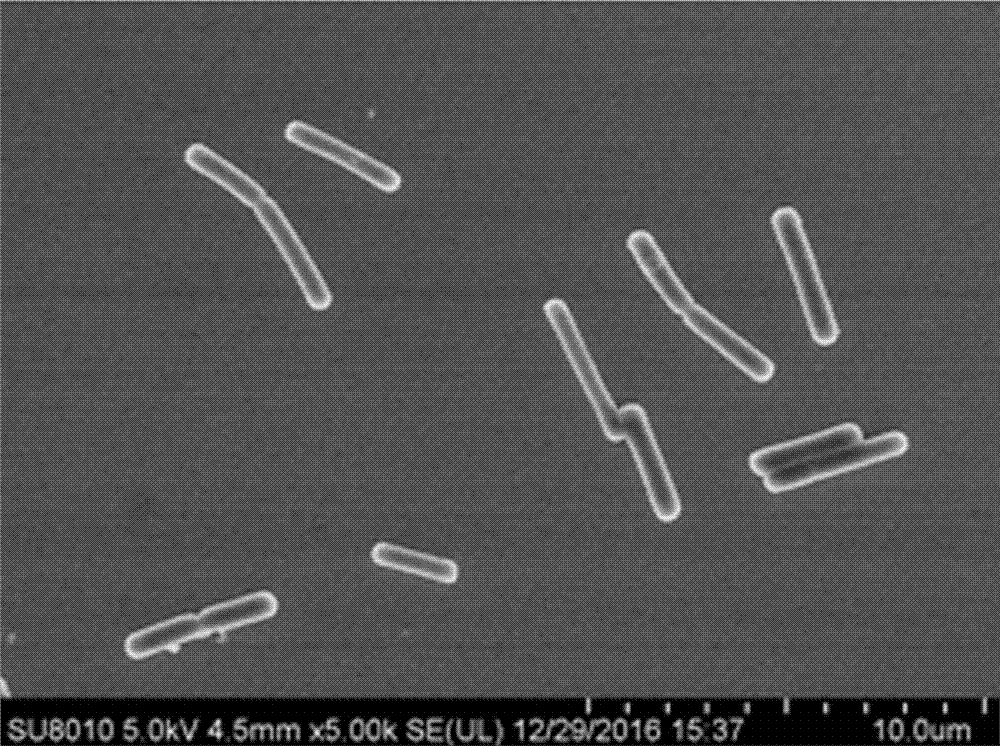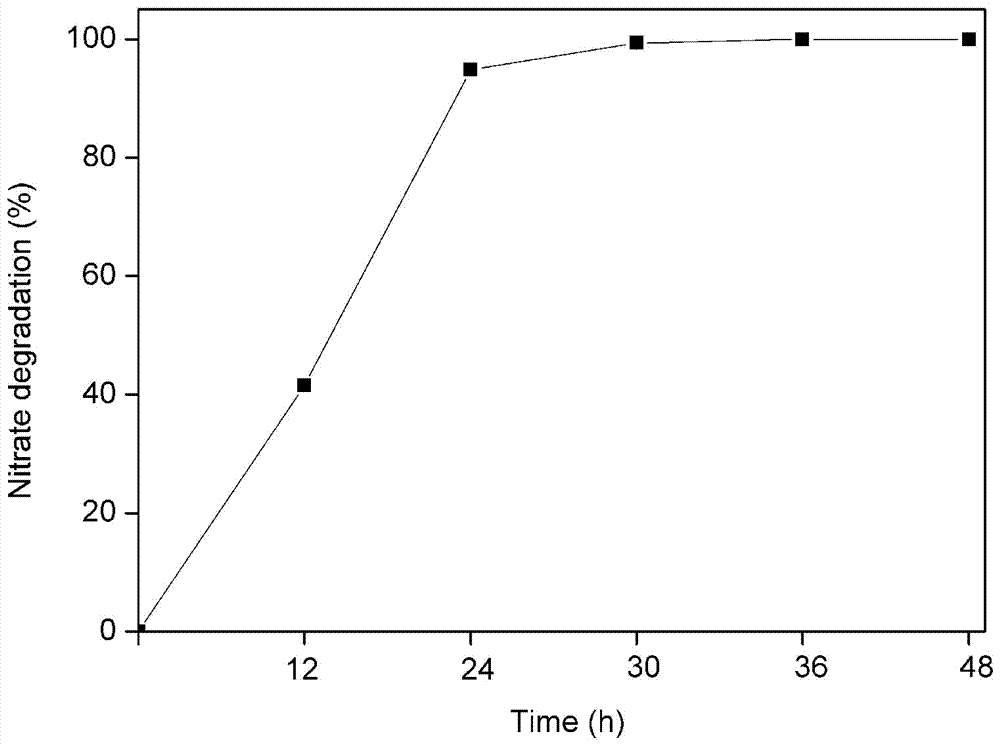Lactobacillus kefiranofaciens and application of lactobacillus kefiranofaciens to chili fermentation
A technology of lactobacillus and kumiss, applied in the direction of lactobacillus, application, bacteria, etc., can solve the problems of increased nitrate residues in fruits and vegetables, increased use of chemical fertilizers, etc., and achieve the effect of solving food safety problems and shortening the fermentation cycle
- Summary
- Abstract
- Description
- Claims
- Application Information
AI Technical Summary
Problems solved by technology
Method used
Image
Examples
Embodiment 1
[0020] Example 1 Identification of strain CICC 6287
[0021] The strain CICC 6287 in the present invention is isolated and screened from traditional fermented peppers in Xinjiang, and the lactic acid bacterium is identified as Lactobacillus kactiseri by using methods such as morphology and molecular biology.
[0022] 1. Morphological identification
[0023] The morphological characteristics and identification of CICC 6287 were carried out according to the "Common Bacteria System Identification Manual", and it was observed by scanning electron microscope ( figure 1 ). MRS culture medium, cultured at 37°C for 24 hours, the colonies were milky white, round, smooth, opaque, and neatly bordered. The bacteria are rod-shaped, 0.5-0.6 μm × 2.6-3.0 μm, arranged in pairs or piles, Gram staining is positive, and catalase is negative.
[0024] 2. PCR amplification of 16S rRNA gene
[0025] Extract the genome of lactic acid bacteria using a bacterial genomic DNA extraction kit. The 1...
Embodiment 2
[0028] Example 2 Study on the characteristics of Lactobacillus kactiser CICC 6287
[0029] 1. Nitrite degradation ability
[0030] According to GB 5009.33-2010: "Determination of nitrite and nitrate in food", the nitrite degradation ability of Lactobacillus equine CICC6287 was determined. 1% inoculum was inoculated to 0.125 mg / mL NaNO 2 In the MRS medium, cultured at 37°C for 24 h, the nitrite degradation rate can reach 94.8%, and after 36 h, the nitrite degradation rate can reach 100% ( image 3 ).
[0031] 2. Amino acid decarboxylase test
[0032] During microbial metabolism, biogenic amines are generated under the action of amino acid decarboxylase. Screening amino acid decarboxylase-negative strains as starters will reduce the content of biogenic amines in fruit and vegetable fermentation production. The results of amino acid decarboxylase test showed that Lactobacillus equine CICC 6287 was negative for arginine dihydrolysis, tryptophan decarboxylase, lysine decarboxy...
Embodiment 3
[0035] Example 3 Application of Lactobacillus kefir CICC 6287 in Xinjiang characteristic pepper fermentation
[0036] Select fresh Xinjiang peppers, wash and crush them, add 3% sucrose and 3% salt, and inoculate with 1% Lactobacillus equine CICC 6287 (10 8CFU / mL), fermented at 30°C for 7 days to obtain fermented pepper. The peppers not inoculated with lactic acid bacteria were used as the comparative test group. According to GB 5009.33-2010: "Determination of Nitrite and Nitrate in Food", determine the nitrite content of fermented pepper ( Figure 4 ). According to GB / T 5009.208-2008: "Determination of the content of biogenic amines in food", the types and contents of biogenic amines in fermented and naturally fermented peppers inoculated with L. Figure 5 ). According to the acid-base titration method in GB / T 12456-2008: "Determination of Total Acids in Food", the total acid content of fermented peppers was determined (Table 1).
[0037] Determination index n...
PUM
 Login to View More
Login to View More Abstract
Description
Claims
Application Information
 Login to View More
Login to View More - R&D
- Intellectual Property
- Life Sciences
- Materials
- Tech Scout
- Unparalleled Data Quality
- Higher Quality Content
- 60% Fewer Hallucinations
Browse by: Latest US Patents, China's latest patents, Technical Efficacy Thesaurus, Application Domain, Technology Topic, Popular Technical Reports.
© 2025 PatSnap. All rights reserved.Legal|Privacy policy|Modern Slavery Act Transparency Statement|Sitemap|About US| Contact US: help@patsnap.com



